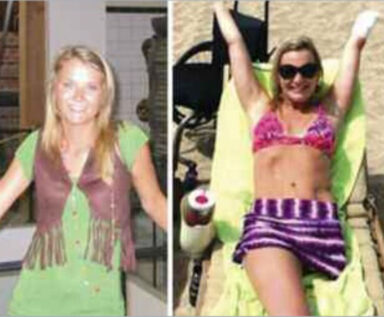Necrotizing Fasciitis: A Patient’s Perspective
- By Trudie Mitschang

THE DAY IN late spring of 2012 that Aimee Copeland’s life irrevocably changed began uneventfully. She’d finished classes for the semester and was hanging out with friends. Since the day was warm, the group decided to go swimming in a nearby creek. Noticing a homemade zip line, they began taking turns gleefully skimming across the water, but on Copeland’s second run, the line suddenly snapped, sending her plummeting into the rocky creek bed below. The resulting gash on her calf required 22 staples, and over the next two days, Copeland suffered severe pain. Then, on May 4, she awoke in horror to find her injured leg had turned purple and was rotting all the way up to her hip. “I thought I was dying,” she recalls.
Rushed back to the hospital, Copeland was diagnosed with necrotizing fasciitis.
What Is Necrotizing Fasciitis?
Necrotizing fasciitis is a bacterial infection often referred to as flesh-eating bacteria. It’s a terrifying moniker, and for good reason. The bacteria attacks the skin and the tissue beneath it (fascia, which surrounds muscles, nerves, fat and blood vessels), often spreading quickly — sometimes at the rate of an inch per hour. Necrotizing fasciitis typically enters the body through an open wound or some sort of external injury, and according to the National Institutes of Health, up to 25 percent of patients die due to complications such as organ failure and blood poisoning.
Several different types of bacteria can cause necrotizing fasciitis, including Streptococcus, the bacteria that causes strep throat, and others found in soil, animals and nature. InCopeland’s case, theinfection was triggered by Aeromonas hydrophila, a bacteria found in fresh or brackish water.
A Brush with Death
By the time she was admitted to the hospital, Copeland’s leg was too far gone to be saved, and with the infection rapidly spreading, her life was also in jeopardy. She was flown to a hospital in Augusta, Ga., where doctors amputated her left leg almost to her hip and cut skin from her abdomen to stop the bacteria’s spread. “All my vital organs were also failing,” she says. “I coded simply being moved from the stretcher to table and had to be resuscitated.”
Following her surgery, Copeland required a respirator to breathe and was on full-time dialysis. Three days after her amputation, doctors told her parents that her chances of survival were slim to none. At that point, she was prescribed vasopressors. For days, they ensured blood flow to her vital organs, but eventually starved her extremities, tragically leading to further amputations. In addition to her left leg, Copeland lost both arms below the elbow and her right leg below the knee. But, she survived.
A Second Chance at Life
For Copeland, the road to recovery was a difficult one. Her long-term relationship with her college boyfriend ended, and she had to learn to accomplish even basic daily tasks using newly fitted prosthetics. Young and single, she also had to regain her self-confidence, eventually dating again. But, it was her frustration with her physical limitations that eventually led her to discover her new life’s purpose. “Before the infection, I was extremely active,” she explained. “You could often find me rock climbing, backpacking and trail running. So, I quickly became frustrated with what seemed to be my new situation — just sitting in a wheelchair. A huge part of who I was no longer seemed accessible to me. And I wasn’t alone. People who use wheelchairs are often separated from the outdoors due to mobility and accessibility issues.”
Determined to live life fully again, Copeland completed her second master’s degree in social work, and through physical therapy, training and determination, she reconnected with her inner athlete. Today, she swims, kayaks and bikes, and she helps others with physical disabilities do the same. “Developing a safe space that promotes healing while providing accessible outdoor environments has become my passion and my goal. That’s why I founded the Aimee Copeland Foundation, which will raise funds to build and run an inclusive wellness park and holistic therapy center — right here in metro Atlanta.”
These days, Copeland is in a happy romantic relationship, loves cooking for friends in her open kitchen, working out and adding to the 80,000 miles she’s already driven in her customized van. With her whole life ahead of her, she says, “My self-confidence has never been higher. I’ve let go of the girl I was before — I’ve completely embraced who I am.”